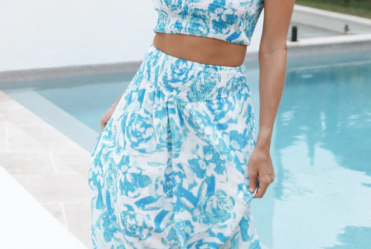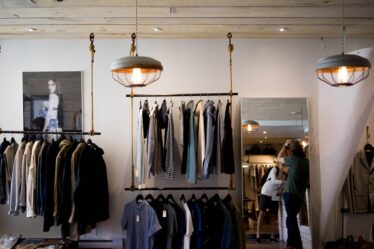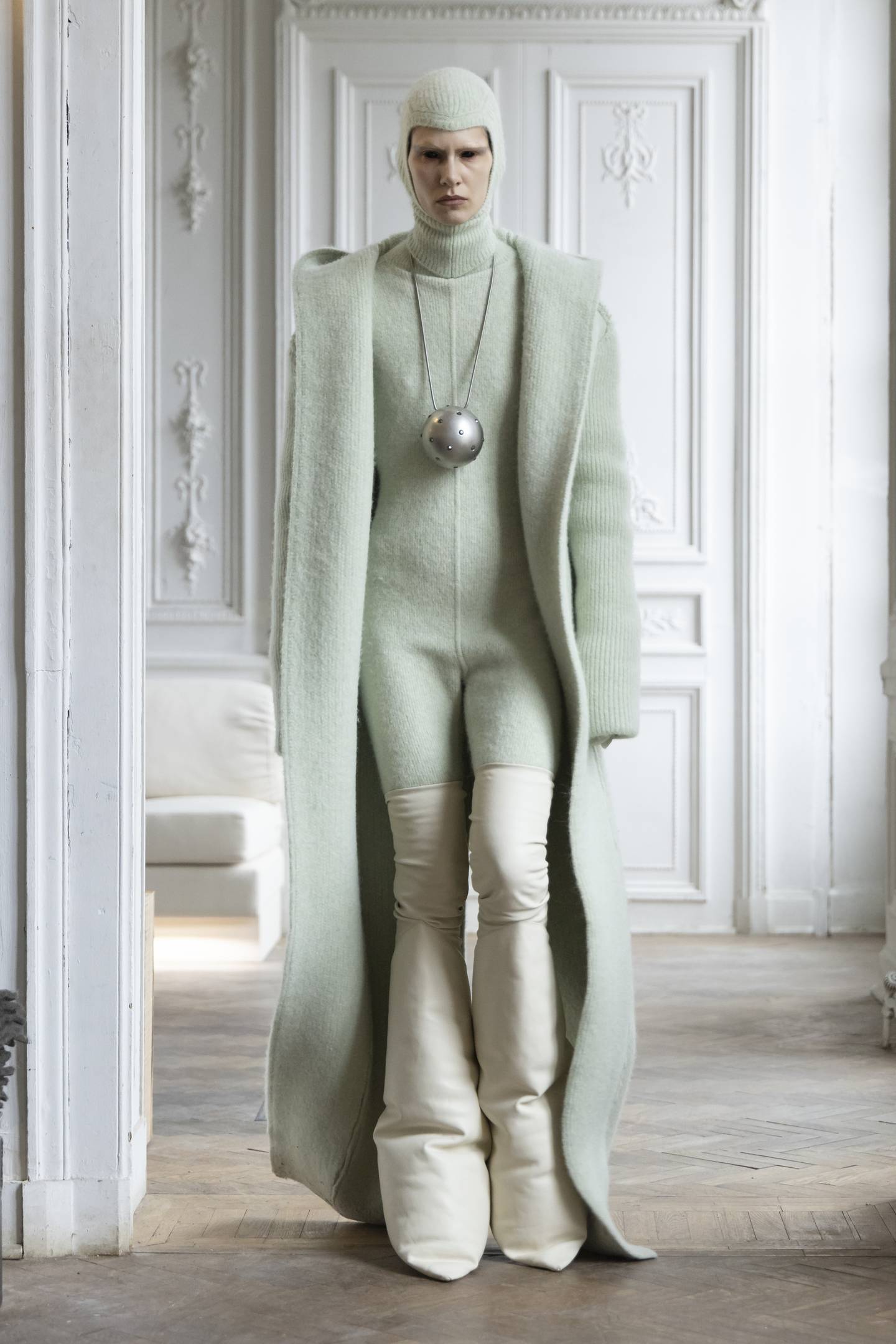
PARIS — When Rick Owens said, ”It’s hard to do shows in my house in Paris without thinking where it started,” he wasn’t only talking about 25 years ago, when he first landed in Paris. He was also thinking about who he’d wanted to be after he escaped his hometown Porterville, California, and moved to LA in the late ‘70s. “My entire aesthetic is probably a reaction to an oppressive, intolerant upbringing,” he mused before his presentation on Thursday. Whatever utopian ideal he aspired to in his misspent youth, he can look around at “this tolerant, inclusive, eerie, elegant life” he has made for himself and think, “not bad. I made some kind of headway.” And the motivation came from Porterville, so that’s what he called his show. He lettered the name on hooded ponchos in a font that mixed art deco Hollywood marquee and skater culture. Tolerant, inclusive.
With a huge retrospective upcoming at the Musée Galliera in Paris, Rick realised that some of his early work has been lost, so he recreated it for “Porterville.” The first pieces he ever made on Hollywood Boulevard were cut from army blankets he bought in the surplus store. Here, they were duplicated in hooded capes cut from Austrian loden felted with purified melt water from the Dachstein glacier. Elegant. Possibly eerie too. Like the fishtailed Hollywood goddess gowns that have been an Owens go-to since his early days. His models moved like imperious queens of outer space, their statuesque quality amplified by the leather “duvet” boots that expanded their lower leg (a more glamorous version of the inflatable rubbers that anchored his men’s show in January).
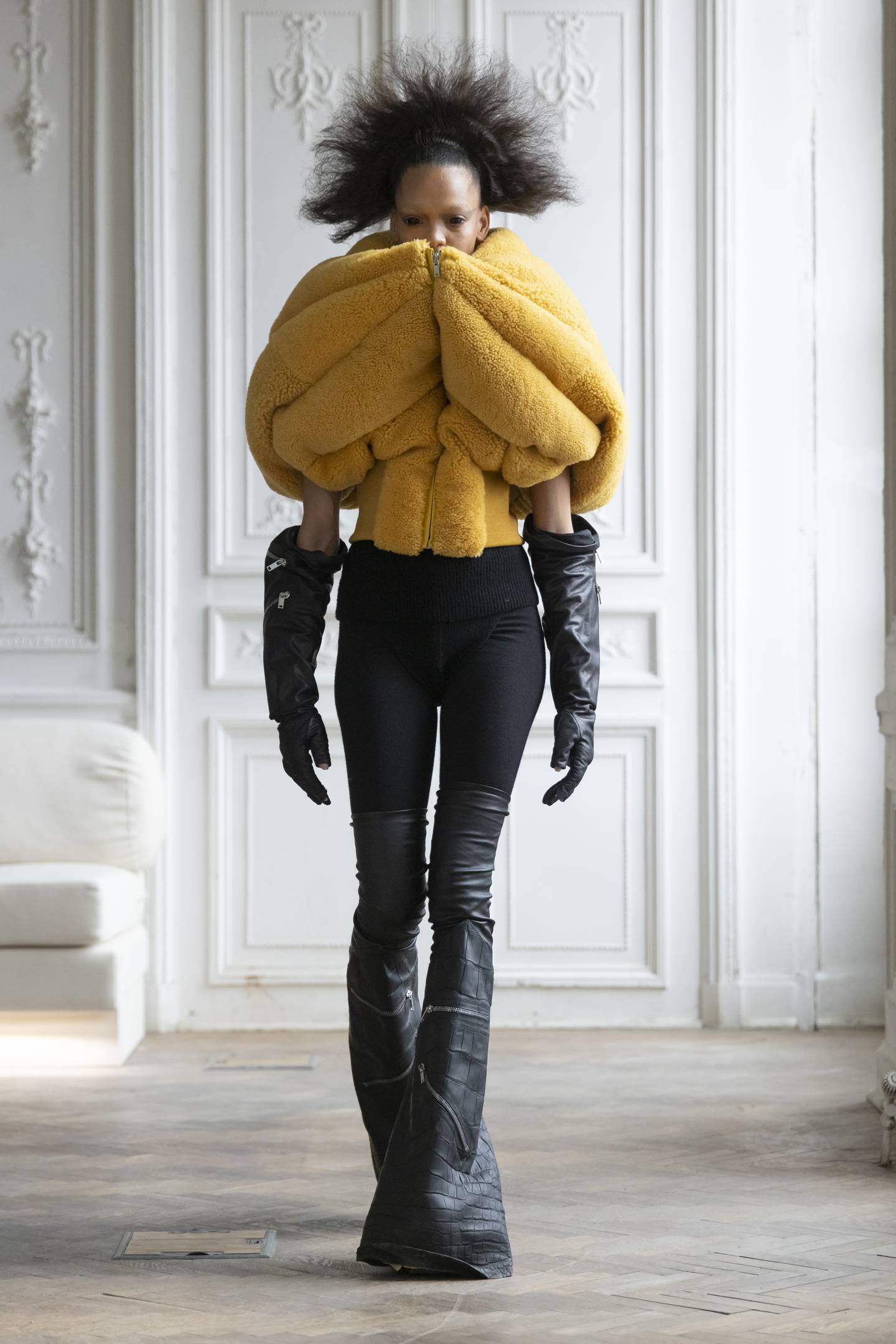
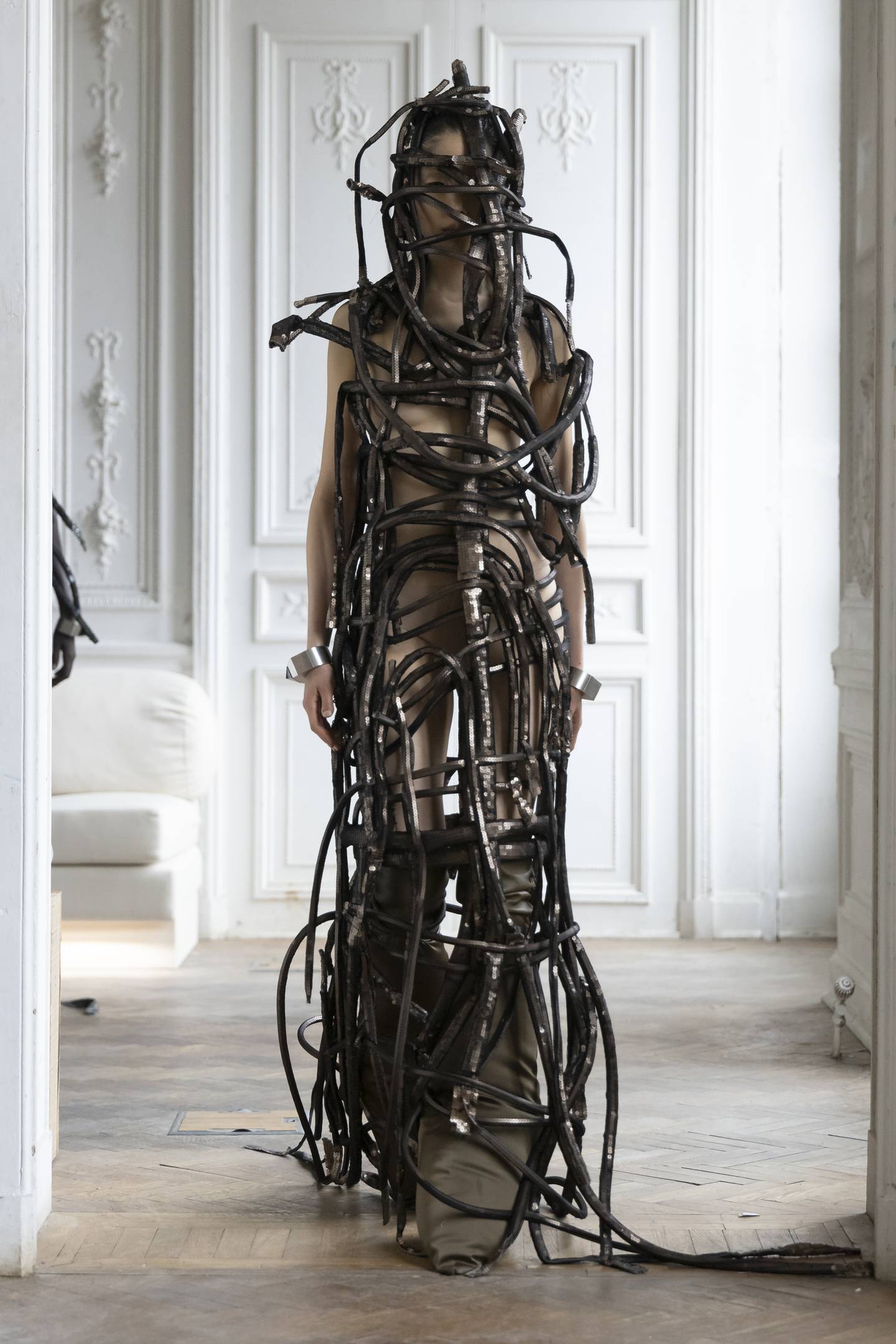
The “spacesuits” came from those early days too, cashmere or felted alpaca bodystockings wrapped in hooded robes or ponchos, or a glorious serpentine tangle of top. The show closed with a handful of models ensnared in tubular webs of rubber hosing. Red carpets on Arrakis beckoned. Believe it or not, Owens’s autobiography was woven into such pieces. His father wouldn’t let him watch TV but he read him pulpy science fantasies by Edgar Rice Burroughs – space queens and space beasts and heroes in intergalactic loincloths – and played him operas by Wagner and Puccini (“Madam Butterfly?” Rapturous music and death!”). That was part of the Porterville crucible that formed Richard Saturnino Owens, and now, as the fashion world’s most successful independent designer, there is no one who can stop him turning it all into gold.
Showing in the intimate human cocoon of home was Owens’s reaction to the barbarism that has been unleashed in the world. It’s also a consolidation of new commitments. For the first time, he’s taking French lessons: every morning at 11, five days a week. He’s three weeks in and so far he’s exulting in being able to say, “I hate umbrellas, a raincoat with a hood is sufficient,” in French. Owens has also realised that he has committed to his house in Paris. “Wow! This is where I’m gonna get old. So I’m like, ‘I’ve gotta get those windows done.’” Porterville to Paris, womb to tomb.
Rick Owens and Jonathan Anderson are compatible spirits, so it wasn’t a stretch that they should both be thinking about homes. One of Anderson’s subtexts with his new collection for Loewe (remembering that Anderson is the most subtextual of designers) was what ends up in the interiors of people’s houses, especially the wealthy who allow decorators to dress their homes for them. Once they might have been aristocrats, now they’re just rich. The world post-“Saltburn,” in other words.
Special guests for Friday’s Loewe show arrived in limousines (Catherine O’Hara stepped out of a Rolls), a piece of performance art to go with Anderson’s concept. The courtyard of the Chateau de Vincennes was laid out as a set of spacious rooms, painted a uniform patrician green. The walls were hung with small paintings by Albert York, a reclusive artist who was a favourite of Jackie Kennedy’s, in the black, folk-ish frames he favoured for his pictures. (The little landscape featured on the invitation is in Anderson’s collection.)

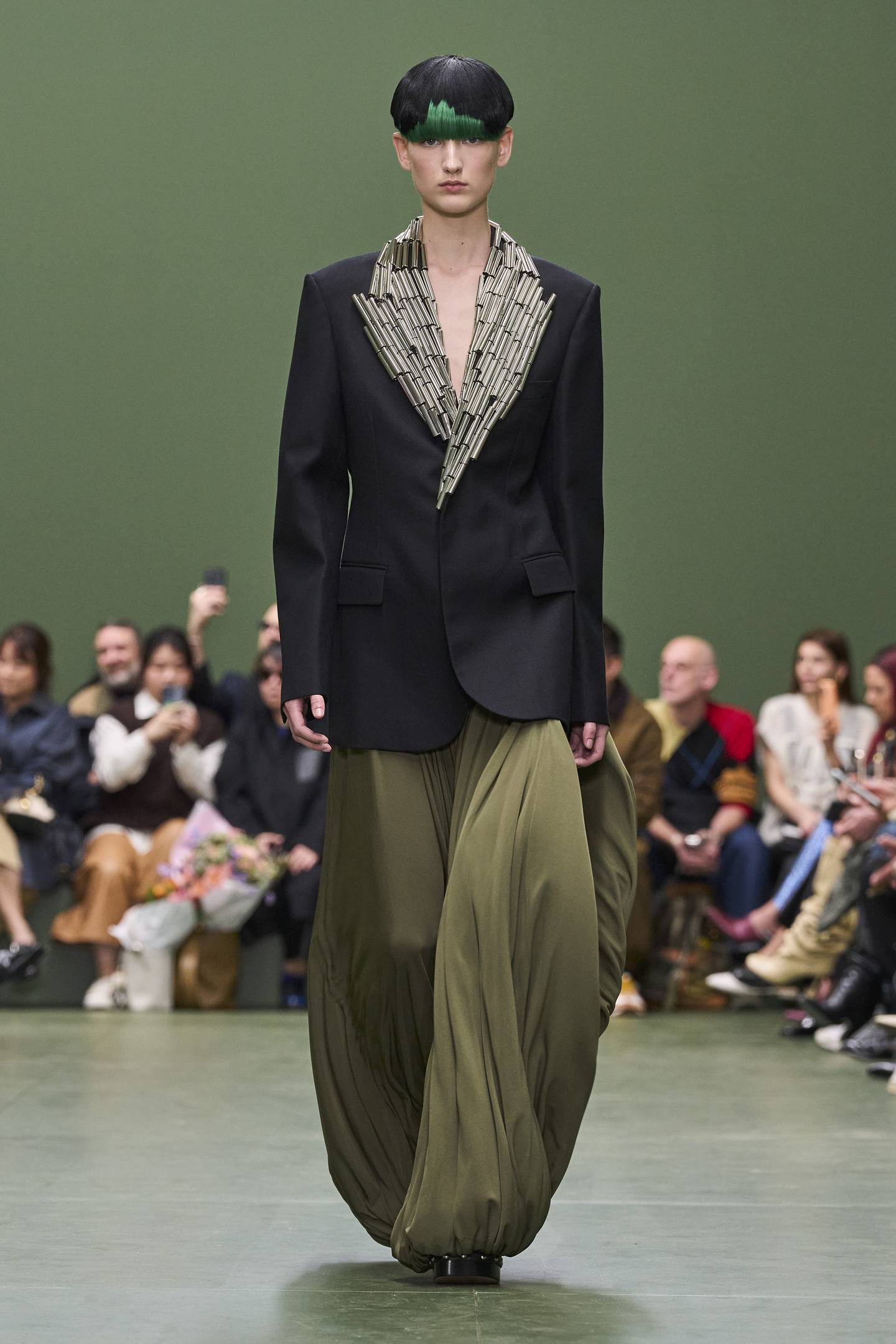
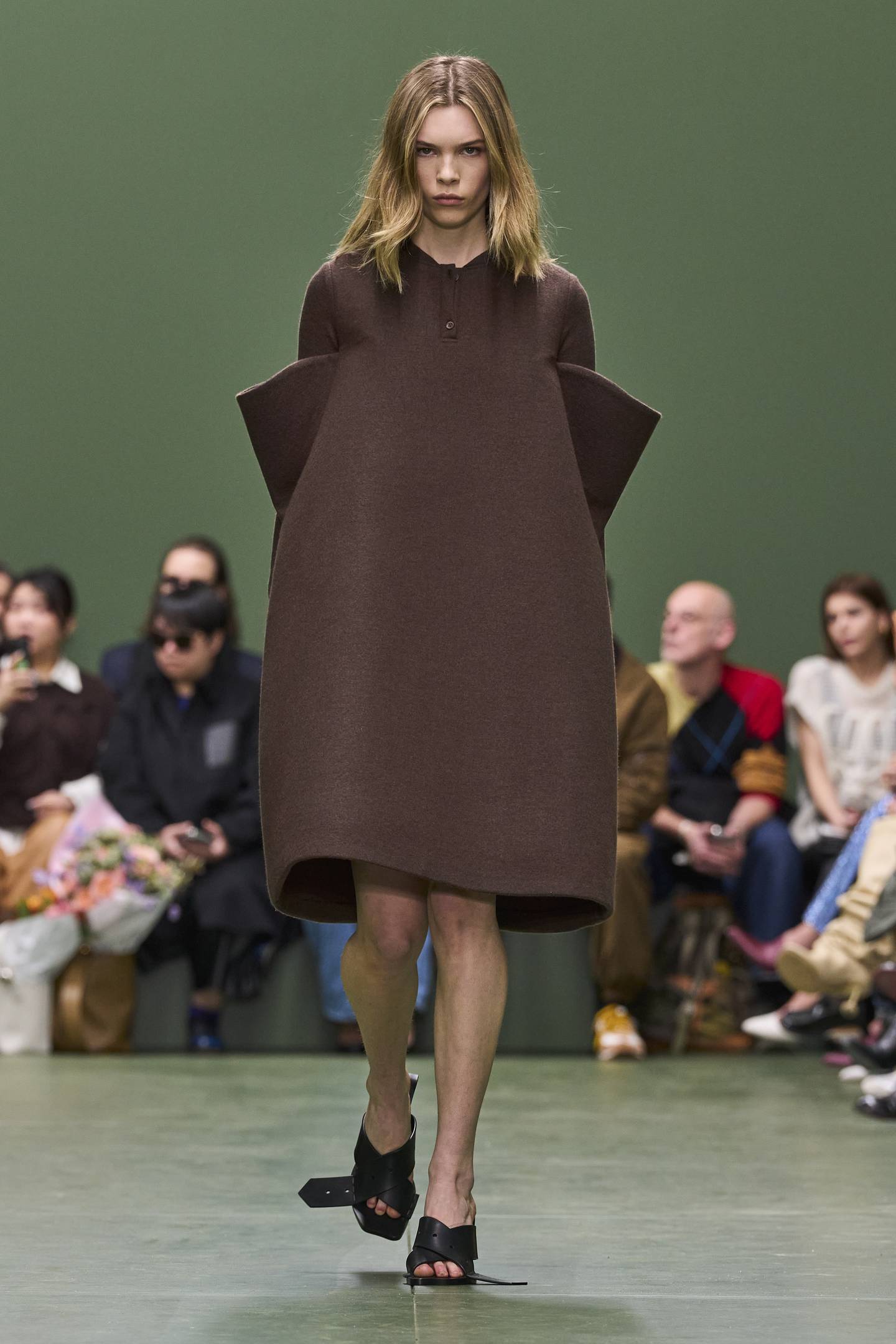
The clothes elaborated on Anderson’s idea of a tremulous aristocracy. He started with a morning coat, a staple for schoolboys at Eton, where they are taught that global domination is their birthright, but Anderson reconfigured it for women. He added elongated swallowtails and for the last look, he beaded the whole thing, even the pinstripes on the accompanying pants, so that it looked like it had been painted with caviar. You can take it for granted now that there will be some transformative craft element in everything Anderson does. Here, substantial coats were collared in carved wood which had been gilded to look like metal. All the prints were beaded, including the lettuce leaves and asparagus spears on handbags. They had a kind of olde worlde preciousness about them. At the same time, they were as quintessentially surreal as the shoes made of straps.
That disconnect is one of Anderson’s trump cards. In his own collection, he dropped weird granny wigs on his models’ heads. Familiar, but totally twisted. Here, the head gear was a glossy black toupé, with a hit of crazy colour in the bangs. Same thing. His florals looked like drawing room wallpaper but he cut them into a halter-top that hung onto its skirt with a mean-looking leather belt. When he raised panniers high up on the torso, they were like fledgling wings for flying away. But my favourite flourish was the chunk of crystal laid across one shoulder like a huge see-through slug. Ours not to reason why with the Anderson challenge.
The other trump card is his commercial savvy. Fact is, the logic-defying verve of Anderson’s clothes generates heat. The harem/combat pant combo is going to be everywhere.


